The new Phenom II processor family brought AMD back on track. While it can't compete clock by clock with Intel, the CPUs are cheap and supporting dual memory interfaces suitable for the cheaper DDR2 and the more enthusiast DDR3 market. The only problem AMD faces is quite high power consumption, not unlike the Core i7 family which is of course faster.
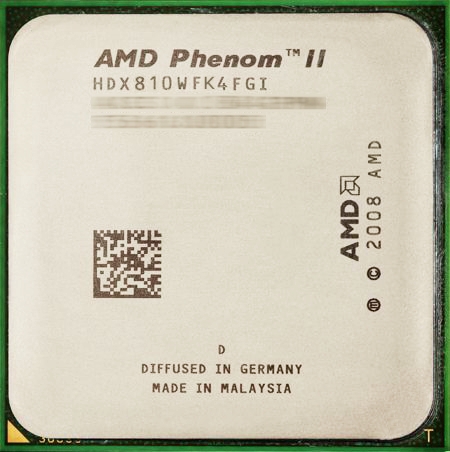
Many users are not that concerned about power-consumption, but during the current economic crises power has gotten more expensive. If someone fails, in this case the companies could not sell all the power due to decreased production, someone has to pay for it. Yes, that's us, the normal citizen.
Also in an other area power consumption plays a major role, for all people building HTPCs for example. The major concern is not the power-consumption itself, but the heat produced by the CPU. So less consumption means less heat and lower heat enables to use smaller coolers. HTPC cases are not that big and don't have the airflow of a big case. Now let us check if also the standard CPUs from AMD can reduce their power-consumption and fit a nicer TDP envelope.
Testbed:
Motherboard:
MSI 790GX-GD70 (provided by MSI)
AMD 790GX/SB750
CPU:
AMD Phenom II 705e (provided by AMD)
AMD Phenom II 905e (provided by AMD)
AMD Phenom II 720 Black Edition (provided by AMD)
AMD Phenom II 810 (provided by AMD)
AMD Phenom II 955 Black Edition (provided by AMD)
CPU-Cooler:
Scythe Kabuto (provided by Scythe-Europe) for AMD and Intel E/Q
Thermalright Ultra 120 eXtreme 1366 (provided by Thermalright) for Intel i7
Memory:
Kingston 3GB Kit PC3-10600U KHX1600D3K3/2GX (provided by Kingston)
1333MHz CL7-7-7-20 CR1T at 1.50V
Graphics Card:
MSI R4850-2D1G-OC (provided by MSI)
Power supply:
PC Power & Cooling Silencer 500W (provided by PC Power & Cooling)
Hard disk:
Western Digital WD4000KD (provided by Ditech)
Case fans:
SilenX iXtrema Pro 14dB(A) (provided by PC-Cooling.at)
Scythe DFS122512LS
Case:
Cooler Master Stacker 831 Lite (provided by Cooler Master)
OS:
Since we are still not fans of Vista, all tests are performed with XP SP3. As 64-bit software is still not very common, we stick with the 32-bit version.
Dual and triple-core CPUs can't be that very efficient compared to quad-cores. These CPUs are all crippled quad-cores, due to the architecture the cores are disabled but have to run regardless, otherwise the memory-controller could not be accessed. This is a design flaw, hopefully fixed with the next AMD family, so cores can really be shut off completely. So if you have to buy a smaller CPU due to budget constraints go for a triple-core.
The CPUs normally run with about 1.300V VCore which is quite high. Some CPUs will come with 1.250V but all our CPUs run with at least 1.300V. The energy-efficient 705e runs with 1.175V which has shown to save some energy. Let's see how low we can get. Please note, that not any CPU will get that low or some will go even lower. Also make sure you have a board which will support under-voltaging. Just decrease the CPU voltage, don't fiddle with the CPU VID voltage, because it will increase idle-power consumption. We have no idea how that is calculated, but the VID is also responsible for the idle-voltage.
The newly introduced Phenom II X2 went down to 1.180V from it's original 1.325V:
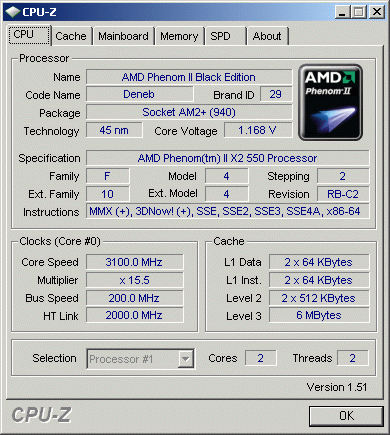
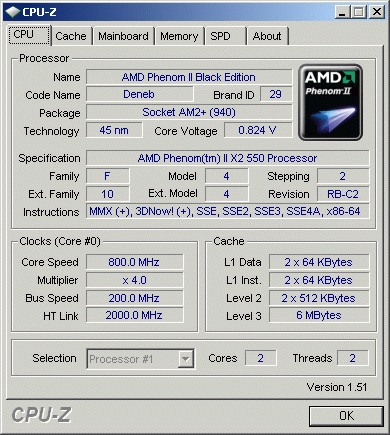
The 705e went down from 1.175V to 0.995V, that's quite nice.
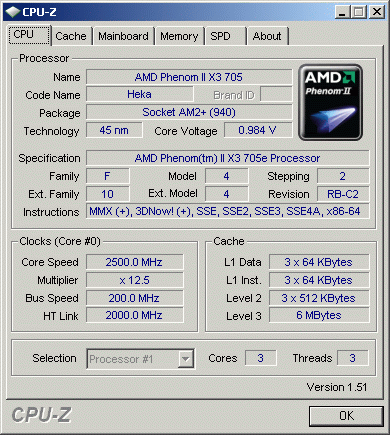
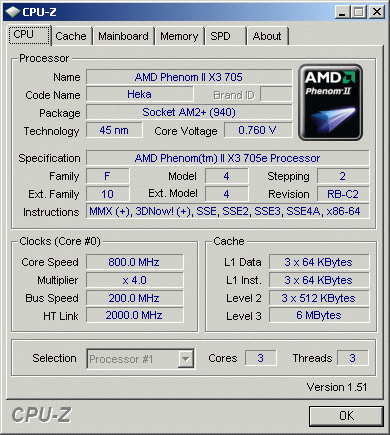
The 720 did well too, down to 1.150V.
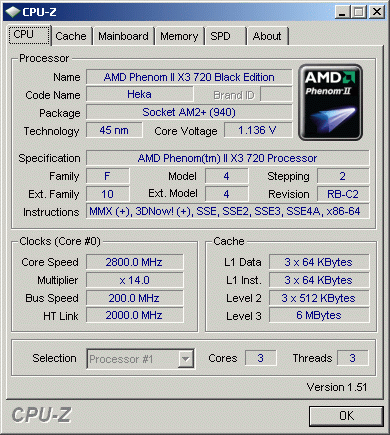
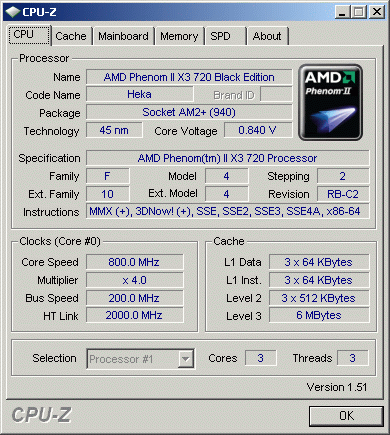
The most power-hungry CPU AMD has is the 955 Black Edition, which will shortly be only the second best, when in some weeks the 965 Black Edition will be launched. Our test-sample has a huge VCore of 1.350V, so we were quite surprised to be able to set it to 1.175V, quite an achievement:
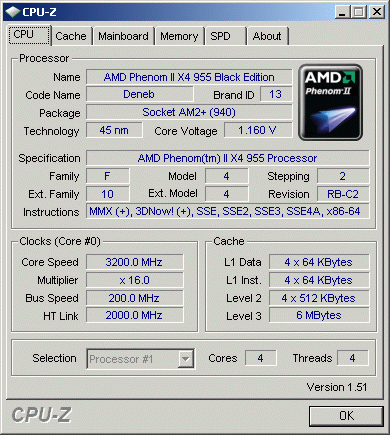
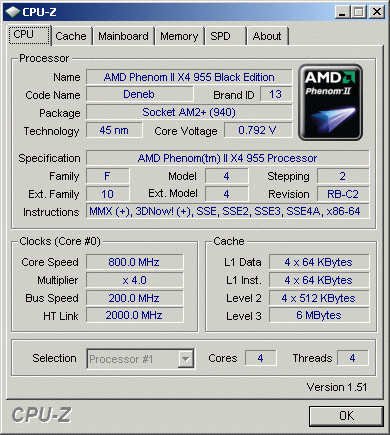
The recently 905e has not much headroom, 1.05V is the lowest we can get.
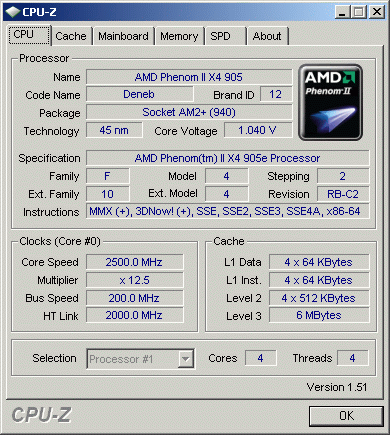
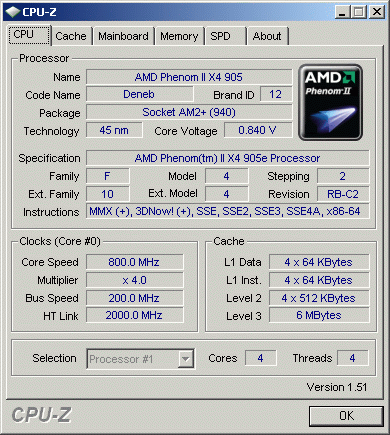
The smaller 810 CPU did also quite well, with just 1.140V.
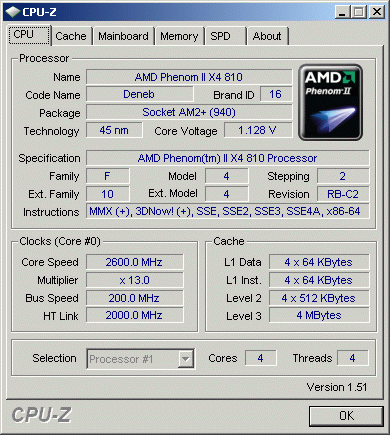
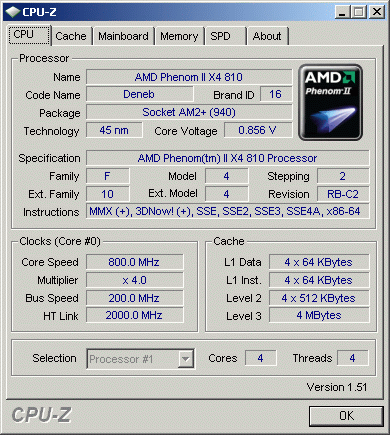
To be sure that the CPU runs correctly, we used Prime95. Normally you should run this programme a day or two, to be sure, but unfortunately we didn't have that much time. So we were happy with one run of small FFTs and one with In-Place FFTs.
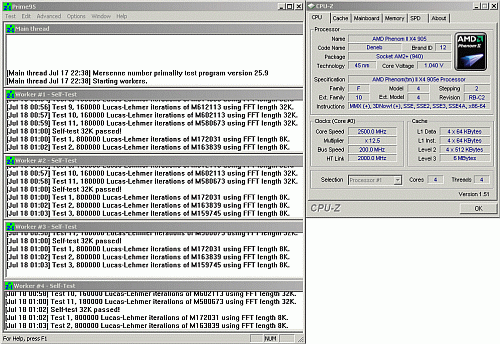
Now it's time to see if the reduced VCore does good on your power-bill. While we did not have much hope with the dual and triple-cores, the quads look much more promising.
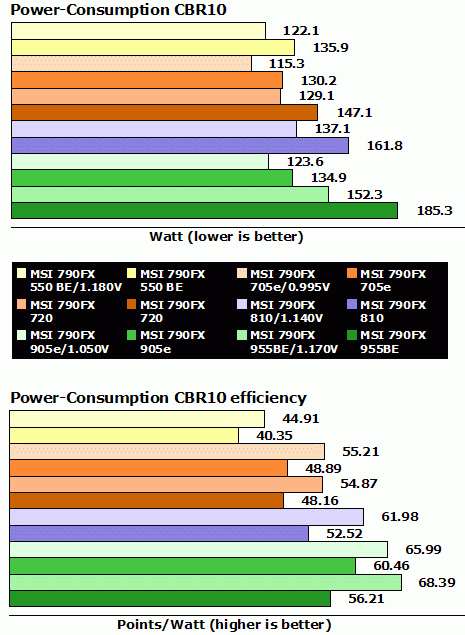
As you can see the efficiency rate went up quite nicely.
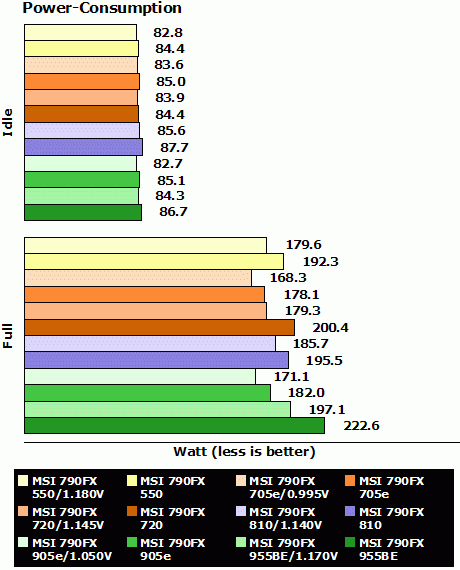
Conclusion
As we have proved AMD CPUs are quite nice for under-voltaging. Power consumption comes down, especially with the quad-cores. Of course, to build an HTPC you need a board that does support under-voltaging. We can only hope companies see a market in this and do introduce mainboards capable of reducing Vcore. And if you are not into overclocking, you can have at least the same performance while keeping your CPU cooler and shaving of some bucks of your power bill.


